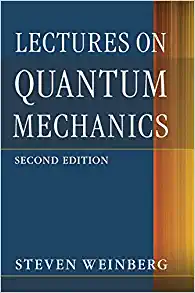please
1. (a) When rebuilding his car's engine, a physics major must exert 300 N of force to insert a dry steel piston into a steel cylinder. What is the normal force between the piston and cylinder? (b) What force would he have to exert if the steel parts were oiled? (The uk for dry steel on steel is 0.3 and the uk for oiled steel on steel is 0.03.) 2. Suppose you have a 120 kg wooden crate resting on a wood floor, with coefficient of static friction 0.500 between these wood surfaces. (a) What maximum force can you exert horizontally on the crate without moving it? (b) If you continue to exert this force once the crate starts to slip, what will its acceleration then be? The coefficient of sliding friction is known to be 0.300 for this situation 3. What force must be applied to a 100.0 kg crate on a frictionless plane inclined at 30 to cause an acceleration of 2.0 m/s' up the plane? 30 4. A machine at a post office sends packages out a chute and down a ramp to be loaded into delivery vehicles. (a) Calculate the acceleration of a box heading down a 10 slope, assuming the coefficient of friction for a parcel on waxed wood is 0.100. (b) Find the angle of the slope down which this box could move at a constant velocity. You can neglect air resistance in both parts. 5. If an object is to rest on an incline without slipping, then friction must equal the component of the weight of the object parallel to the incline. This requires greater and greater friction for steeper slopes. Show that the maximum angle of an incline above the horizontal for which an object will not slide down is 0 = tan-1 /,. Assume that a = 0 and that static friction has reached its maximum value. 6. Consider the 52.0 kg mountain climber shown below. (a) Find the tension in the rope and the force that the mountain climber must exert with her feet on the vertical rock face to remain stationary. Assume that the force is exerted parallel to her legs. (Hint: this force is a combination of normal force and friction.) (b) What is the minimum coefficient of friction between her shoes and the cliff? 310 Flegs 15 7. Microwave ovens rotate at a rate of about 6 rpm (revolutions per minute). What is this in revolutions per second? What is the angular velocity in radians per second? 8. A truck with 0.420 m radius tires travels at 32.0 m/s. What is the angular velocity of the rotating tires in radians per second? What is this in rev/min? 9. Calculate the centripetal force on the end of a 100 m (radius) wind turbine blade that is rotating at 0.5 rev/s. Assume the mass is 4 kg. 10. At takeoff, a commercial jet has a speed of 60.0 m/s. Its tires have a diameter of 0.850 m. (a) At how many rev/min are the tires rotating? b) What is the centripetal acceleration at the edge of the tire? (c) With what force must a determined 1.00 x 10-15 kg bacterium cling to the rim? (d) Take the ratio of this force to the bacterium's weight. 11. A car rounds an unbanked curve of radius 65 m. If the coefficient of static friction between the road and car is 0.70, what is the maximum speed at which the car can traverse the curve without slipping? 12. What is the ideal banking angle for a gentle turn of 1.20 km radius on a highway with a 105 km/h speed limit (about 65 mi/h), assuming everyone travels at the limit? 13. A 30.0 g ball at the end of a string is swung in a vertical circle with a radius of 25.0 cm. The rotational velocity is 200.0 cm/s. Find the tension in the string: (a) at the top of the circle, and (b) at the bottom of the circle. 14. Part of riding a bicycle involves leaning at the correct angle when making a turn, as seen in the figure. To be stable, the force exerted by the ground must be on a line going through the center of gravity. The force on the bicycle wheel can be resolved into two perpendicular components-friction parallel to the road (this must supply the centripetal force), and the vertical normal force (which must equal the system's weight). (a) Show that 0 (as defined in the figure) is related to the speed v and radius of curvature r of the turn by 0 = tan-1(v2/rg). (b) Calculate 0 for a 12.0 m/s turn of radius 30.0 m (as in a race). CG F = sum of WI N and f N = W 15. A 0.0502-kg pair of fuzzy dice is attached to the rearview mirror of a car by a short string. The car accelerates at constant rate, and the dice hang at an angle of 3.20 from the vertical because of the car's acceleration. What is the magnitude of the acceleration of the car







